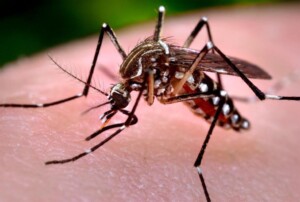Mosquitoes are notorious vectors for many grave diseases. Examples of these diseases are malaria, yellow fever, dengue fever, and Zika virus. Fighting the disease by fighting the vector is an old practice in preventive medicine. One new approach in this direction is the mosquito gene alteration so that the insects can no longer transmit the disease.
In a news article by Nature, Oxitec (a biotech firm) has announced results from the first open-air study of genetically engineered mosquitoes in the United States. The report stated that the genetically altered mosquitoes behaved as planned. The results are positive, but larger tests are still needed to determine whether the insects can achieve the ultimate goal of suppressing the wild population of potentially disease-transmitting mosquitoes.
The experiment has been under way since April 2021 in the Florida Keys, a chain of tropical islands near the southern tip of Florida. Oxitec, which developed the insects, released nearly five million engineered Aedes aegypti mosquitoes over the course of seven months, and has now almost completed monitoring of the release sites.
Mosquito genome alteration
Wild Aedes aegypti mosquitoes can carry viruses such as dengue, Zika and yellow fever. Oxitec’s engineered males carry a gene that is lethal to female offspring. If the engineered males mate with wild females, their female offspring will die before they can reproduce. Male offspring will carry the gene and pass it on to half of their progeny. As each generation mates, more females die, and the A. aegypti population should shrink.
Release of the genetically altered mosquitoes
Researchers placed boxes of Oxitec mosquito eggs and surrounded them with traps, covering a radius of more than 400 meters. Some traps served as egg-laying sites, and others caught adult mosquitoes. The researchers found that the males that hatched from the eggs typically travelled within a one-hectare area around the release box, just like wild A. aegypti. The engineered mosquitoes mated with the wild population, and wild females laid eggs in Oxitec traps, as well as in other sites.
Oxitec researchers collected more than 22,000 eggs from the traps and took them back to their laboratory to hatch under observation. The firm reported that all females that inherited the lethal gene, which fluoresce under certain light, died before reaching adulthood. Furthermore, the team found that the lethal gene persisted in the wild population for two to three months, or about three generations of mosquito offspring, and then disappeared.
Further studies with the mosquito gene alteration
This pilot study was not intended to determine how well the method suppresses the wild population. Expanded studies still need be conducted. These studies, however, will not assess whether Oxitec’s method reduces transmission of dengue or other viruses carried by A. aegypti. There’s not enough Aedes-transmitted viral infection in the United States to do that kind of study. To run such an experiment, the company would have to invest in a controlled trial elsewhere and run the study like a clinical trial.
Controversy about the mosquito genetic engineering study
Suppressing A. aegypti will not reduce the need for pesticides and other mosquito control measures since A. aegypti makes up only about 4% of the mosquito population in the study location. There are other species, which transmit other diseases or even are just a big nuisance. Some environmental groups and local residents still oppose the idea of spreading genetic engineering of insects.
Source:
Nature 604, 608-609 (2022). doi: https://doi.org/10.1038/d41586-022-01070-x
See also:
Genetically Modified Mosquitoes Fighting Malaria
Go to the News Board
